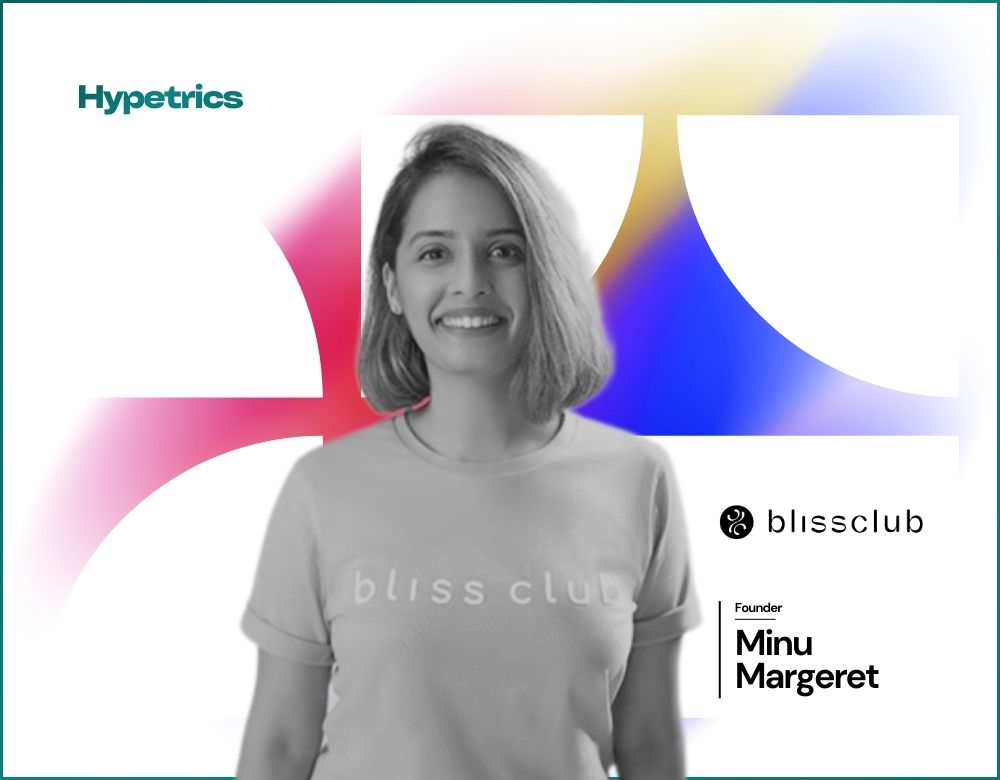In a landscape flooded with fitness influencers, imported athleisure clones, and male-centric sizing, BlissClub took a different path. It didn’t just enter the activewear category it created its own: movementwear, designed from scratch for Indian women.
Founded in 2020 by Minu Margeret, BlissClub started not with a product, but with a problem: Indian women had to settle for leggings and workout tops that were either poorly sized, lacked comfort, or simply didn’t reflect how women actually move. What emerged was not just a D2C brand but a community-led business model rooted in functionality, movement, and confidence.
A Growth Story Backed by Purpose
In under three years, BlissClub grew from an Instagram-led pre-launch community to one of India’s fastest-scaling consumer brands. According to financial filings:
- FY22: ₹14.8 Cr in revenue (from ₹35 lakh in FY21)
- FY23: ₹68 Cr in revenue
- FY24: revenue of ₹87–92 Cr approx..
That’s a 6x jump in just two years. However, this rapid scale came with widening losses:
- ₹8.9 Cr in FY22
- ₹36–39 Cr in FY23
- ₹44 Cr in FY24
Despite the burn, the brand’s top-line growth and community traction have made it a magnet for venture capital. BlissClub has raised approximately ₹200 Cr (~$25M) in funding from top-tier VCs including Elevation Capital and Eight Roads Ventures.
Building with Focus: Depth Over Breadth
While many D2C brands expand horizontally, chasing multiple SKUs and sub-brands, BlissClub followed a different playbook: focus deeply on a few hero products and build trust through consistent performance.
The best example is their best-selling leggings, designed with high-waist support, stretchable yet firm fabric, and multiple phone-sized pockets features often overlooked by global and local competitors. Other key SKUs like flared pants, tops, and sports bras have also followed a functionality-first approach.
This narrow-yet-deep product strategy keeps supply chain complexity low and brand recall high. It also allows BlissClub to collect hyper-specific customer feedback and iterate rapidly.
From D2C to Omnichannel
Starting as a pure-play online brand gave BlissClub early momentum, but their recent offline push is a signal of maturity. The brand launched its first flagship stores in Bangalore and Mumbai, with plans to scale into Tier 1 and Tier 2 cities. This shift aligns with rising offline retail trends, where experiential buying is seeing a resurgence.
Offline presence also allows BlissClub to reduce returns, build trial-based loyalty, and own more of the customer journey something pure D2C brands often struggle with.
Karishma Kapoor: A Strategic Ambassador
In 2024, BlissClub roped in Karishma Kapoor as its brand ambassador. This wasn’t just a celebrity endorsement, but a statement of intent.
Karishma, known for her grace, dance, and timeless fitness appeal, embodies the brand’s core message: movement is for every woman, at every age.
This decision reflects a deliberate shift away from trend-chasing Gen Z influencers, toward building a multi-generational brand narrative. It also aligns with BlissClub’s broader market expansion into working professionals, mothers, and fitness-conscious women beyond metros.
Community-Led, Not Just Consumer-Led
From the beginning, BlissClub was built with its community, not just for them. Before the first product even launched, founder Minu engaged women on Instagram to understand their pain points, preferences, and daily routines. That feedback became the blueprint for BlissClub’s movementwear line.
Today, that community exists not just online, but in real life. The brand has created “Blissverse” a series of events, workouts, and meetups designed to build an emotional connection beyond transactions.
This community-led loop also supports organic content creation, feedback cycles, and loyalty allowing BlissClub to keep its CAC (customer acquisition cost) leaner than many of its peers.
Business Intelligence Highlights:
- Category Creation: BlissClub didn’t just join the activewear market; it reframed it as “movementwear,” a purpose-driven category that allowed for clear differentiation and storytelling.
- Funding Discipline: Despite its growth, the brand has been capital-efficient, raising under $25M while delivering triple-digit revenue growth.
- Hero Product Strategy: The leggings line is to BlissClub what the basic t-shirt is to Uniqlo an anchor SKU that builds trust, volume, and repeat purchases.
- Offline Expansion: With physical stores now live, the brand is investing in omnichannel to widen reach and reduce D2C-only limitations.
Competitive Landscape
BlissClub competes with players like HRX, Zymrat, and Silvertraq in the activewear space, and brands like Kica and Clovia Active in the women-first fitnesswear segment.
The Hypetrics Take:
BlissClub is not just building a brand. It’s architecting a new consumer behavior where women claim movement as their own, without compromise. While profitability remains a challenge, the brand’s strategic clarity, focused execution, and loyal community put it in a rare league of D2C players who are not just selling products, but shaping culture.
As India’s D2C wave matures, BlissClub might just be one of the few to convert community-first commerce into a sustainable, long-term retail force.














